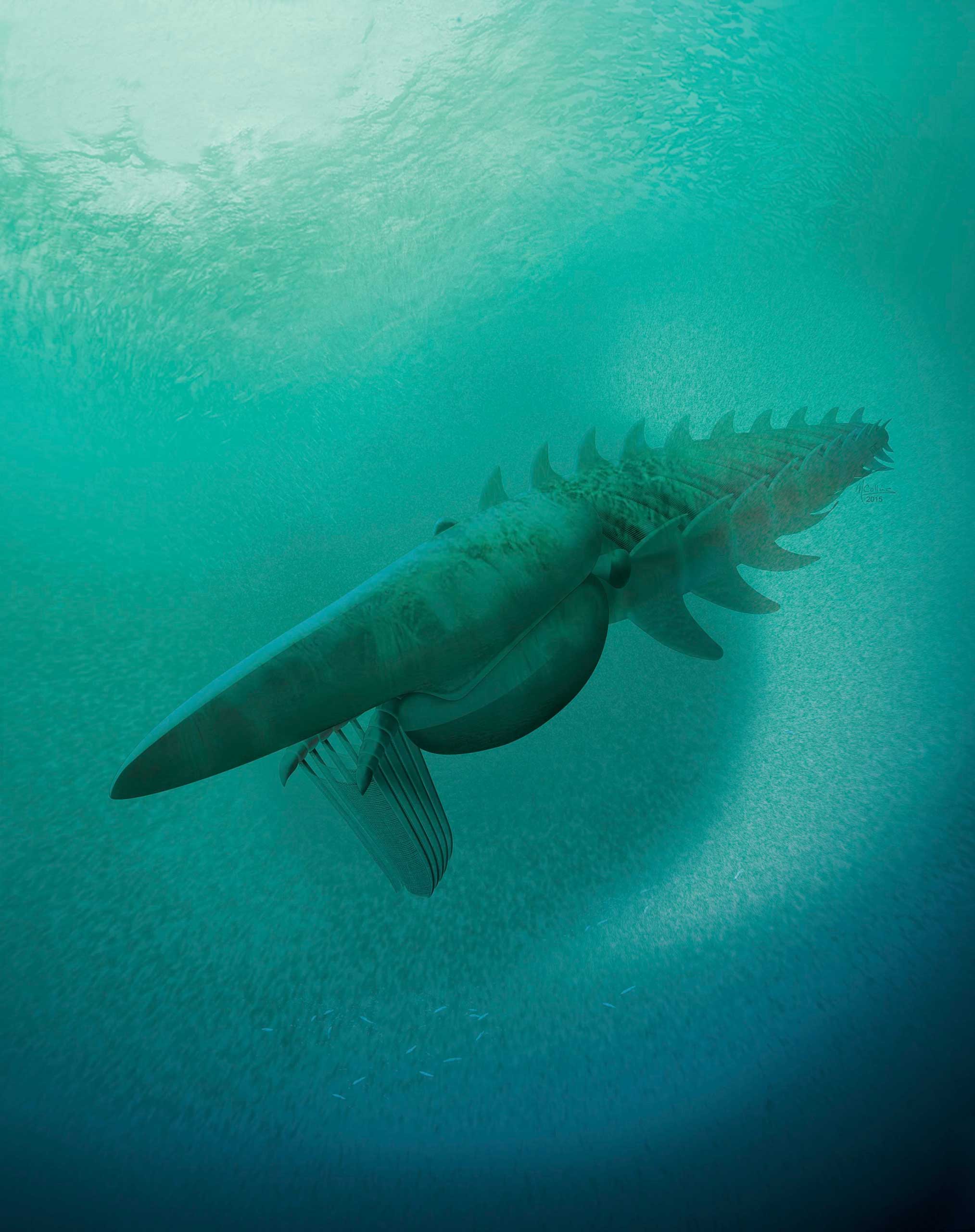
The newly pieced together skeleton of Aegirocassis benmoulae, a 480-million-year-old sea creature, looks a bit like a cross between a shrimp and a lobster. But at 7-feet-long, this animal was no shrimp. In fact, it was likely once the largest animal on earth.
The fossil’s discovery in Morocco, outlined in a Nature article last week, sheds new light on arthropods from the palaeozoic era, or from about 542 million years ago to 251 million years ago. The Aegirocassis has a second set of fins unlike previously thought, and while many similar arthropods would actively seek out prey, the Aegirocassis captured plankton through a net-like appendage.
But don’t worry: Its method of feeding likely made the Aegirocassis relatively easy going, despite its size, researchers told Reuters.
“Given the huge size of Aegirocassis and its very alien appearance, I assume most people would probably be terrified if they’d encounter it while swimming,” said Yale University paleontologist Peter Van Roy, a study author. However, contrary to almost all other anomalocaridids which were active predators, our animal would have been a very peaceful guy.”
More Must-Reads From TIME
- What Student Photojournalists Saw at the Campus Protests
- How Far Trump Would Go
- Why Maternity Care Is Underpaid
- Saving Seconds Is Better Than Hours
- Welcome to the Golden Age of Ryan Gosling
- Scientists Are Finding Out Just How Toxic Your Stuff Is
- The 100 Most Influential People of 2024
- Want Weekly Recs on What to Watch, Read, and More? Sign Up for Worth Your Time
Write to Justin Worland at justin.worland@time.com